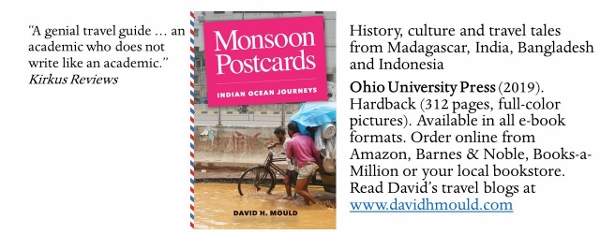One indicator of a country’s relationship to its past is how it deals with the reminders of colonial or foreign rule—the statues and plaques honoring administrators and generals, the chapters in school textbooks, the names of cities, towns and streets.
India has not been in a huge rush to remove reminders of its British colonial past. Since independence in 1947, more than 100 cities and towns have been re-named, but that leaves hundreds more that are still known by their colonial-era names. The changes have included: Mumbai (formerly Bombay), Chennai (Madras), Kolkata (Calcutta), Guwahati (Gauhati), Kanpur (Cawnpore), Kochi (Cochin), Mysuru (Mysore), Pune (Poona), Puducherry (Pondicherry), Shimla (Simla), Tiruchiapalli (Trichinapoly), Thiruvananthapram (Trivandrum), and Varanasi (Benares).
The most recent rash of official changes came in 2014 when the federal government finally approved new names for 12 cities. As usual, there was no way to hurry up the bureaucracy. It had been almost a decade since the government of the state of Karnataka had approved changing the name of Bangalore, India’s fifty largest city, to Bengaluru ahead of the city’s official 500th anniversary in 2006.
A popular, although historically dodgy, legend has it that the place owes its name to a local king who got lost in the forest on a hunting trip. After hours of aimless wandering, the hungry and exhausted king spotted a hut inhabited by an old woman who offered him boiled beans because that was all she had. Impressed by the hospitality, the king named that part of the forest Bendakaalooru in memory of the meal; in old Kannada, the local language, benda means boiled, kaalu beans and ooru town or city, making it literally the “city of boiled beans”). Or perhaps the name is derived from Benga-val-ooru (City of Guards), a reference to the city’s military muscle from the 16th to the 18th centuries. When the British captured the fort in 1791, colonial administrators, perhaps struggling to get their tongues around the Kannada name, dubbed the city Bangalore, and that was how it was known for more than two centuries. During the public debate over reverting to the original name, some tourism and business officials fretted about the impact “the city of boiled beans” might have on the image of the country’s leading IT hub, but most on both sides of the issue expected that the similar-sounding name would be quickly adopted.
It didn’t happen quickly. Although the official signs, airport monitors and websites have been changed, some Indians, including Bengaluru natives, continue to use the old name. The same goes for Mumbai, Chennai and Kolkata, although the latter (the Bengali name) is close enough in pronunciation to Calcutta that sometimes you can’t tell which name is being used. Indeed, many colonial-era city and town names were what the locals called the place, or how the name sounded to the British administrators. There aren’t many real English place names.
Street names are another matter. India’s municipal governments have systematically erased the names of colonial officials from signs and maps. The streets of Central Delhi were once a who’s who of British monarchs, prime ministers, generals, viceroys and colonial administrators—King Edward, King George, Allenby, Canning, Clive, Cornwallis, Curzon, Kitchener, Monto, Reading. They’ve all gone. Kingsway is now Rajpath, Queensway Janpath.
During visits, I try to be culturally sensitive and use the new names, but sometimes get puzzled looks. “Oh, you must mean Bombay. Why didn’t you say so?” My colleague Suruchi Sood, who returns to India at least once a year for work or family visits, reports a moment of panic when she took a domestic flight to Madras. She arrived at the gate and saw that the destination listed was Chennai. For a moment, she thought she was on her way to another city.






